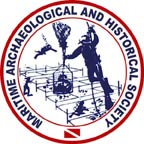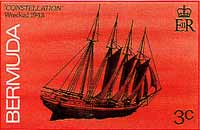The main features documented in the bow section of the wreck were the exposed keelson assembly, consisting of a keelson
and sister keelsons; a windlass; a cleat or mooring bollard; and a concentration of glass bottles.
The stern section also contained a segment of the keelson assembly, along with a number of 55-gallon
drums in varing states of deterioration; a large water tank; and a rudder assembly. The latter
two features were detached from the main part of the wreck, lying to starboard and port, respectively.
There is some speculation that the rudder is from the Nola, also known as the Montana, the wreck of an
Civil War blockade runner that lies some 15 meters away having hit the same reef in 1863.
|

